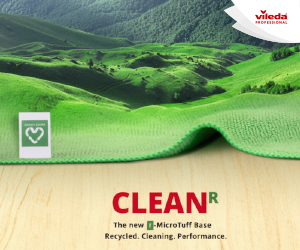We can, and should, go further to reduce air pollution – and it is technically possible to do so, says England’s Chief Medical Officer (CMO), Professor Chris Whitty, in his annual report published earlier this month (December 8).
Outdoor air pollution has reduced significantly since the 1980s, but it still poses significant threats to human health, including increasing heart disease, stroke, lung disease, cancer and asthma exacerbation. It also leads to increased mortality, is associated with impacts on lung development in children, and disproportionately affects the poorest and most vulnerable communities. Indoor air pollution is representing an increasing proportion of the overall problem as outdoor air pollution improves.
Tackling air pollution should be a priority, improving the health of communities and reducing health inequalities.
The CMO’s recommendations on outdoor air pollution include:
• Accelerating the electrification of light vehicles and public transport
• Innovation to reduce air pollution from non-exhaust sources, such as tyres, and the need for a greater range of options for reducing air pollution from heavy and specialised vehicles
• Local urban planning should support reducing air pollution locally - such as near schools and healthcare settings
• In agriculture, ammonia air pollution emissions could be reduced through modified farming practices, such as applying slurry directly to soil
• The NHS has committed to halving its contribution to poor air quality within a decade.
For indoor air pollution, the CMO’s recommendations include addressing the major engineering challenge of ensuring effective ventilation while minimising energy use and heat loss, to reduce air pollution while achieving net zero carbon. Increased research into tackling indoor air pollution is also needed.
Dr Nick Watts, NHS Chief Sustainability Officer, commented on the report, saying: “It’s a stark reminder of the importance of tackling climate change at source, and why collective efforts to build a Greener NHS matter – for our health now and for generations to come.”
The NHS currently emits an estimated 3600 tonnes of NOx and 120 tonnes of PM2.5; work is ongoing to halve NHS emissions for both pollutants by 2032. Its fleet of vehicles is second only to the Royal Mail nationally, so electrification of the vehicle fleet and minimising unnecessary trips will reduce NHS transport-related air pollution emissions, whilst reducing the combustion of fossil fuels used to heat hospitals will reduce NOx emissions.
The Greener NHS team cites examples of work already underway to cut air pollution, including the first fully electric HGVs at Northern Care Alliance, the use of ebikes to visit patients at Sussex Community NHS Foundation Trust, a trial to deliver chemotherapy by drone in the Isle of Wight and new solar panel installations at hospitals including Milton Keynes University Hospital and Castle Hill Hospital, reducing the reliance on fossil fuels and saving energy costs.










